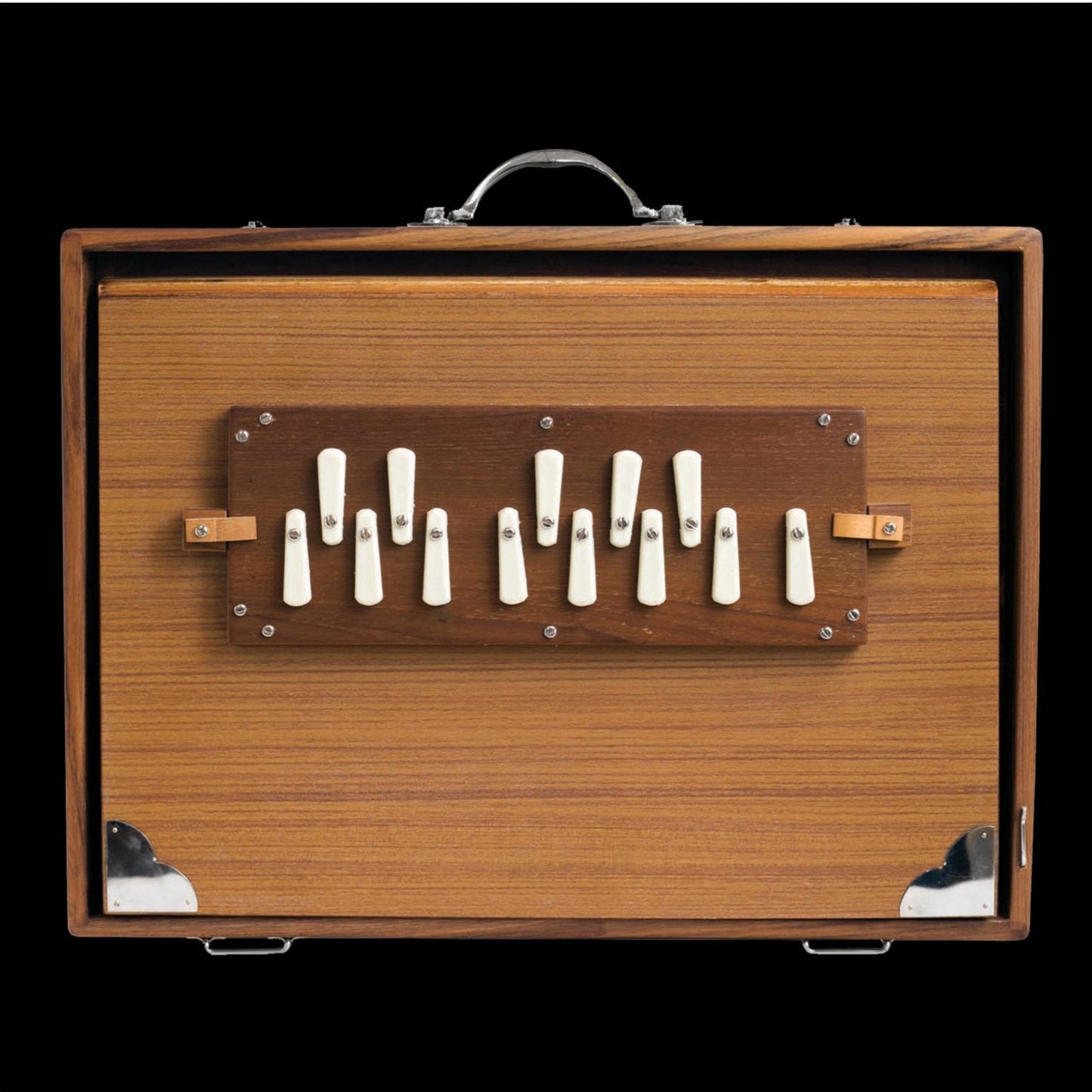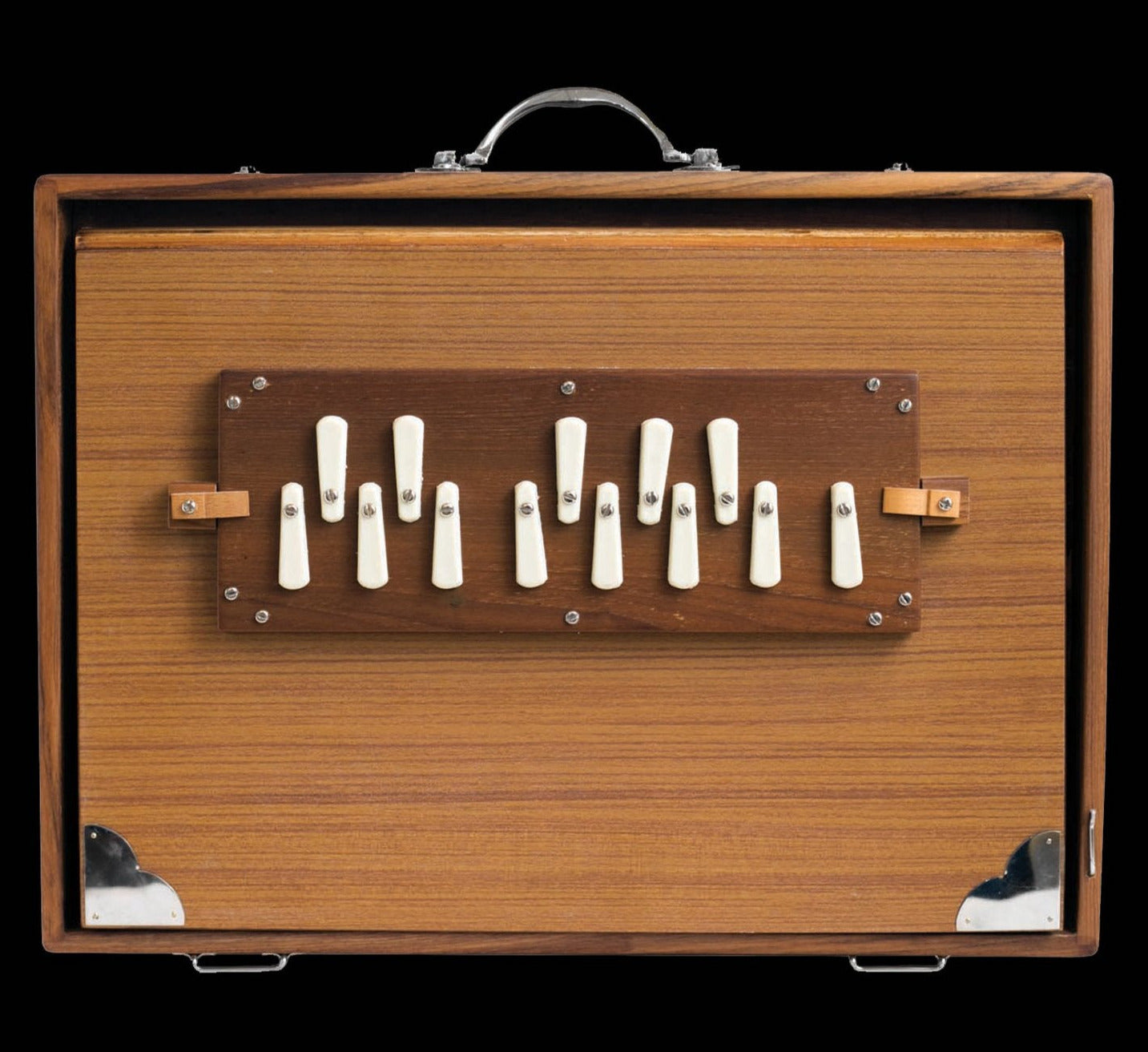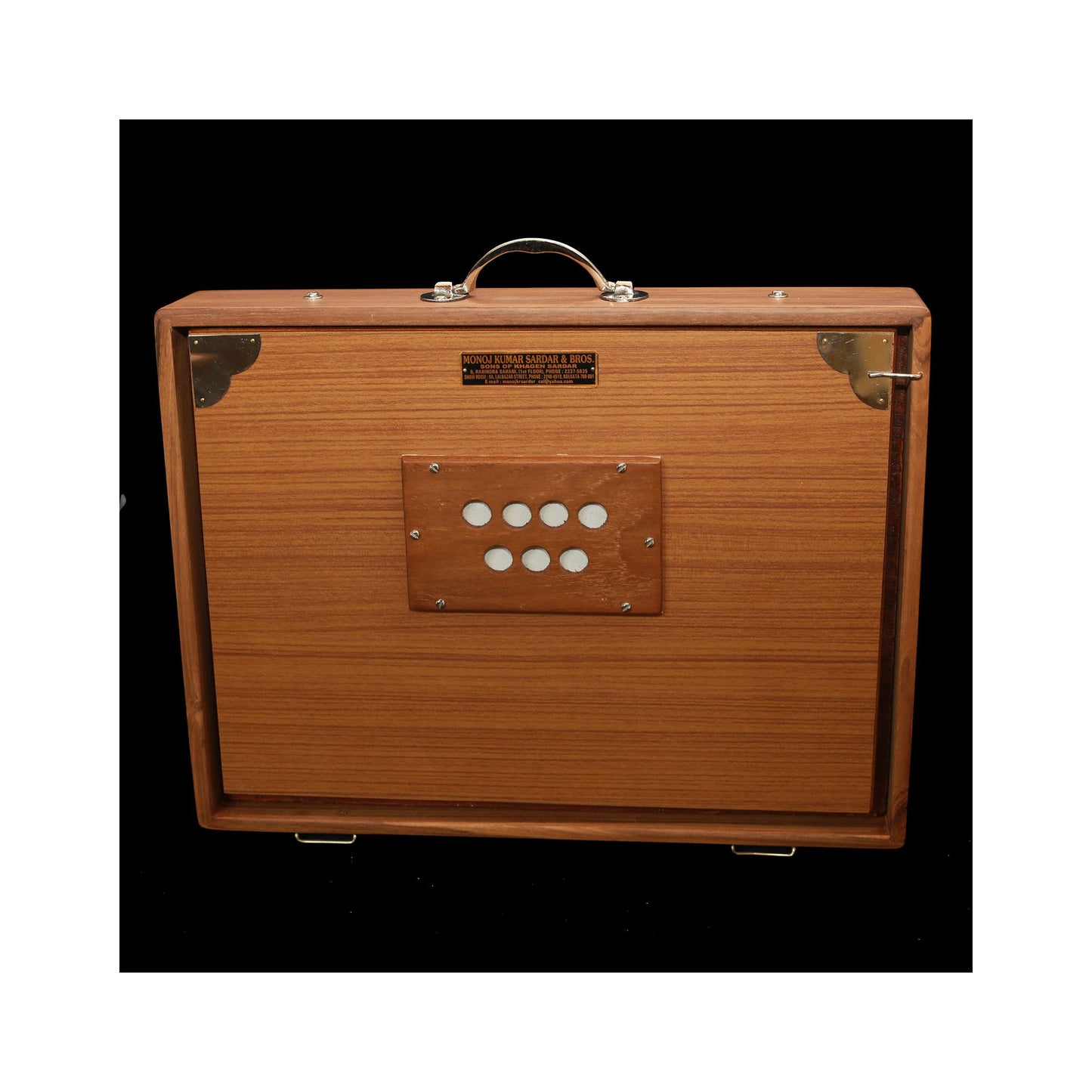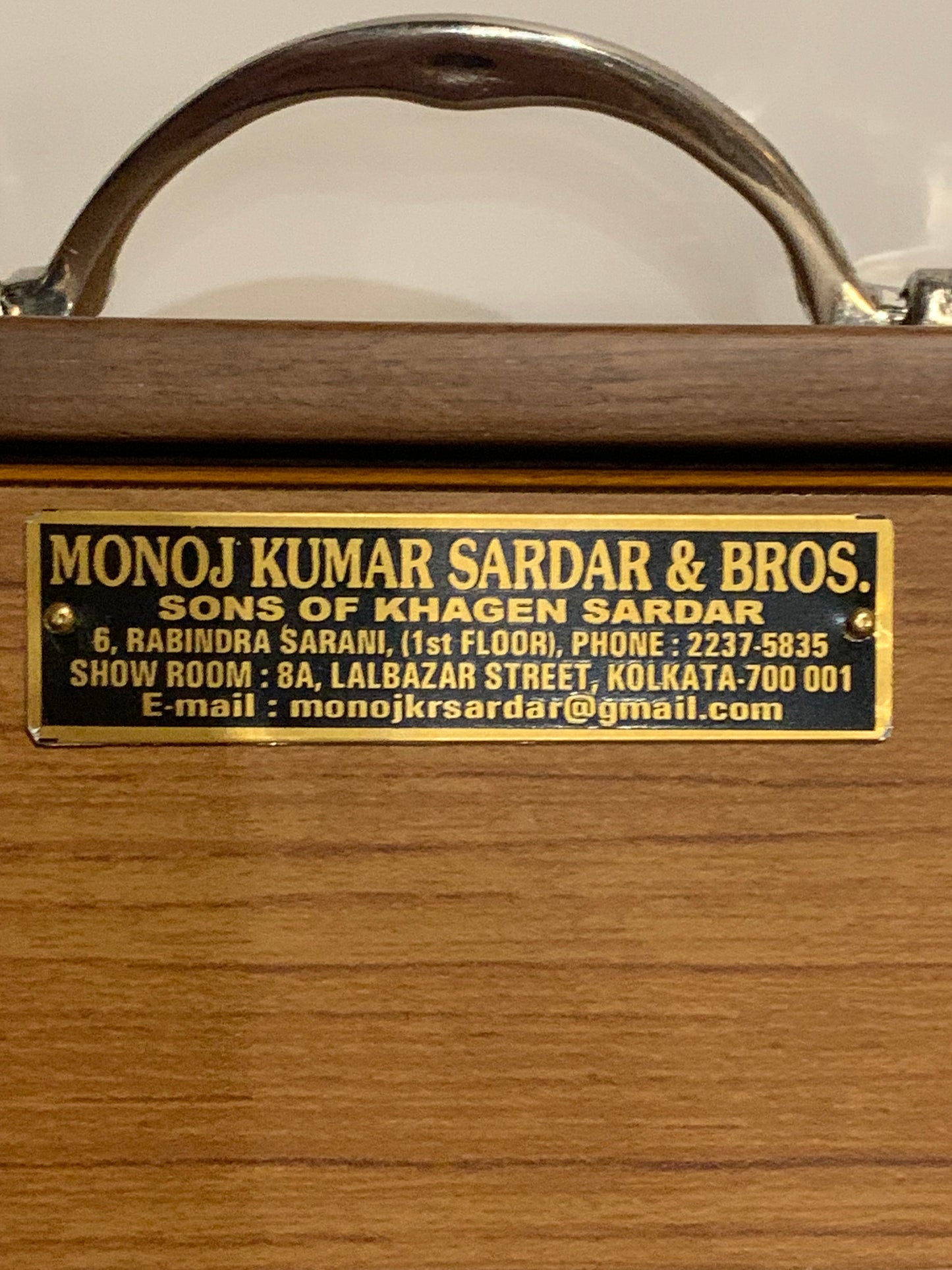Shruti Box Ligner 432/440 Hz – 1 octave C3-C4, pure tone, 41×32×8.5 cm - 4.5 kg, bag included!
Shruti Box Ligner 432/440 Hz – 1 octave C3-C4, pure tone, 41×32×8.5 cm - 4.5 kg, bag included!
Couldn't load pickup availability
- ✧─────✧
About the product:
→ Shruti Box in 432 or 440 hertz from the brand 'Ligner' - 1 octave row from C3 to C4 (C3 to C4)
🌍 Origin: India
📐 Dimensions: ± 41 × 32 × 8.50 centimeters
⚖️ Weight: ± 4,500 grams
🧬 Material: Teak wood and plywood
🎶 Sound type: Clear, warm and bright
📦 Packaging: Individually - Sold with its sturdy fabric cover
🎁 Ideal for giving as a gift or treating yourself!
👉 A pure fundamental tone instrument - The 432 Hz frequency is considered the "frequency of harmony." Unlike the standard 440 Hz tuning, it is said to be closer to the Earth's natural vibrations and promote a state of deep well-being.
It works like a small harmonium without keys.
You can create a powerful continuous tone or chord on it. The sound is similar to that of an accordion.
The shruti-box or surpeti is an Indian free-reed musical instrument. It is a singing guide with variable drones operated by a manual bellows, like a keyboard-less harmonium. There is also an electronic version.
Bill
A leather or cardboard bellows is attached to a rectangular wooden sound box.
The air escapes through several simple brass reeds (between 4 and 16) which can be opened or closed as desired. The air must be pumped by hand by operating the bellows. There is also a mute.
Game
It is a study instrument, of modest volume and price, which replaces a tampura, a harmonium, or a shehnai drone or nâgasvaram. It is also sometimes found in concerts alongside the tampura.
Bill
A leather or cardboard bellows is attached to a rectangular wooden sound box. Air escapes through several simple brass reeds (between 4 and 16) that can be opened or closed as desired. The air must be pumped by hand by operating the bellows. There is also a mute.
📋 Fact sheet:
| Characteristic | Information |
|---|
| Name | Shruti Box (or Sruti box) |
| Origin | India (Indian classical music) |
| Description | Small portable harmonium without keyboard, which produces a continuous accompanying sound (drone) using metal reeds and bellows |
| Materials | Wood (body), metal reeds, manual bellows |
| Function / Use | Provide a constant note or drone to serve as a tonal reference (drone) for singers and instrumentalists |
| Playing technique | Operate the bellows with one hand and open the flaps corresponding to the desired notes (often the tonic and the fifth) |
| Sound | Continuous, harmonic sound, close to the harmonium but softer and more stripped down |
| Traditional applications | Indian music (Hindustani and Carnatic), accompaniment to singing (raga, bhajan, kirtan) |
| Modern applications | Meditation, yoga, music therapy, world and experimental music |
| Symbolism | Harmonic base, spiritual and meditative support |
- ✧─────✧
A question? A comment? | Order and delivery information
A question? A comment? | Order and delivery information
⋯⋯⋯⋯⋯⋯⋯⋯⋯⋯⋯⋯⋯⋯⋯⋯⋯⋯⋯⋯
📞 Customer service available from Tuesday to Saturday , from 10am to 7pm (French time)
- 🇫🇷 From France: 06 51 85 38 18
- 🌍 From abroad: +33 6 51 85 38 18
- 💬 Live chat: via the bubble in the bottom right corner of your screen
- 📧 Email : available 24/7 – we respond quickly!
⋯⋯⋯⋯⋯⋯⋯⋯⋯⋯⋯⋯⋯⋯⋯⋯⋯⋯⋯⋯
🔖 Order today and receive your package within 2 to 10 days depending on your continent.
💳 Secure payment & certified by SSL encryption 🔐
↩️ Returns & exchanges possible within 14 to 30 days after receipt.
🌍 Shipping costs are calculated automatically based on your shipping address at checkout.
📦 Country of shipment: France 🇫🇷
Share









